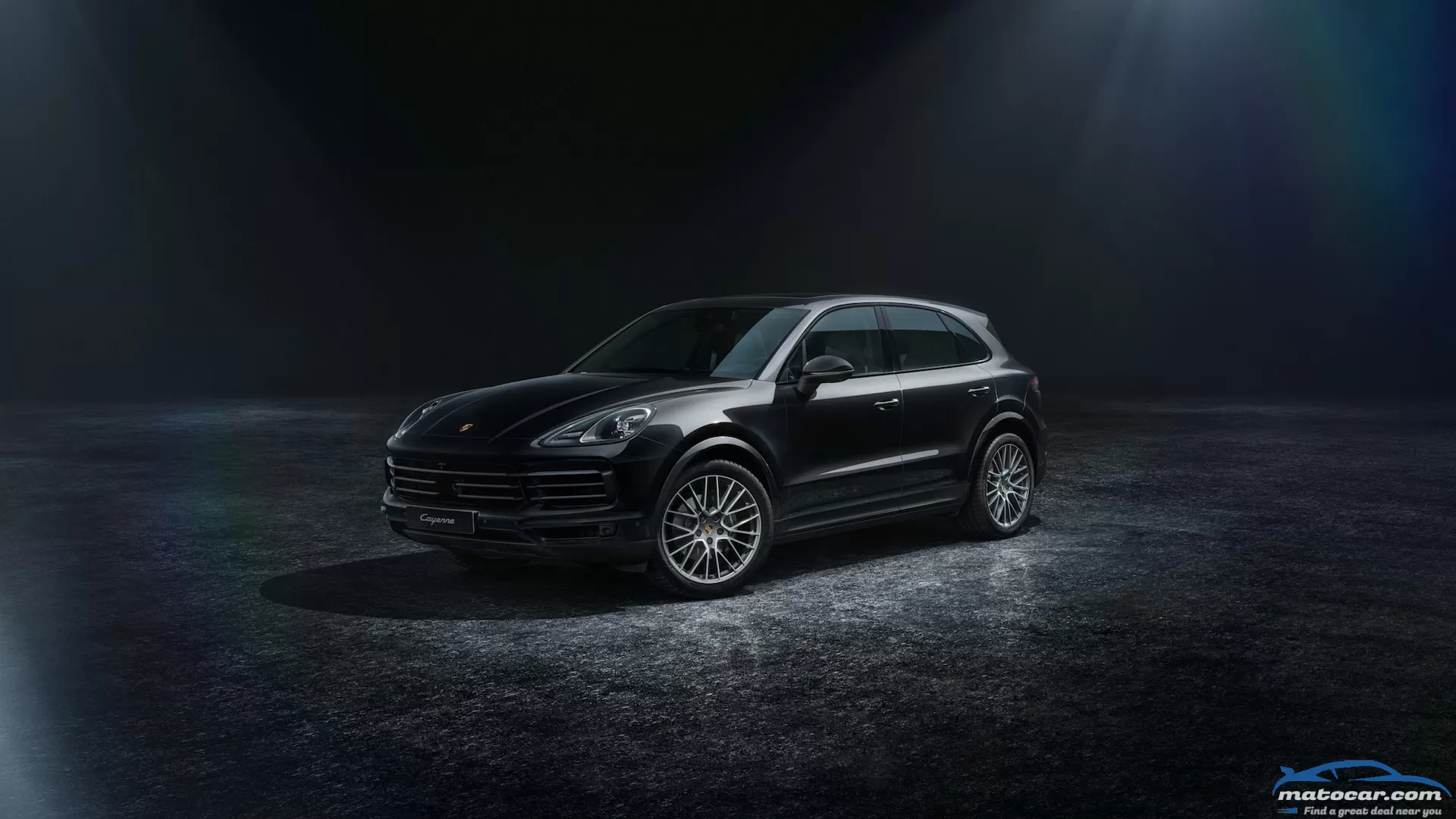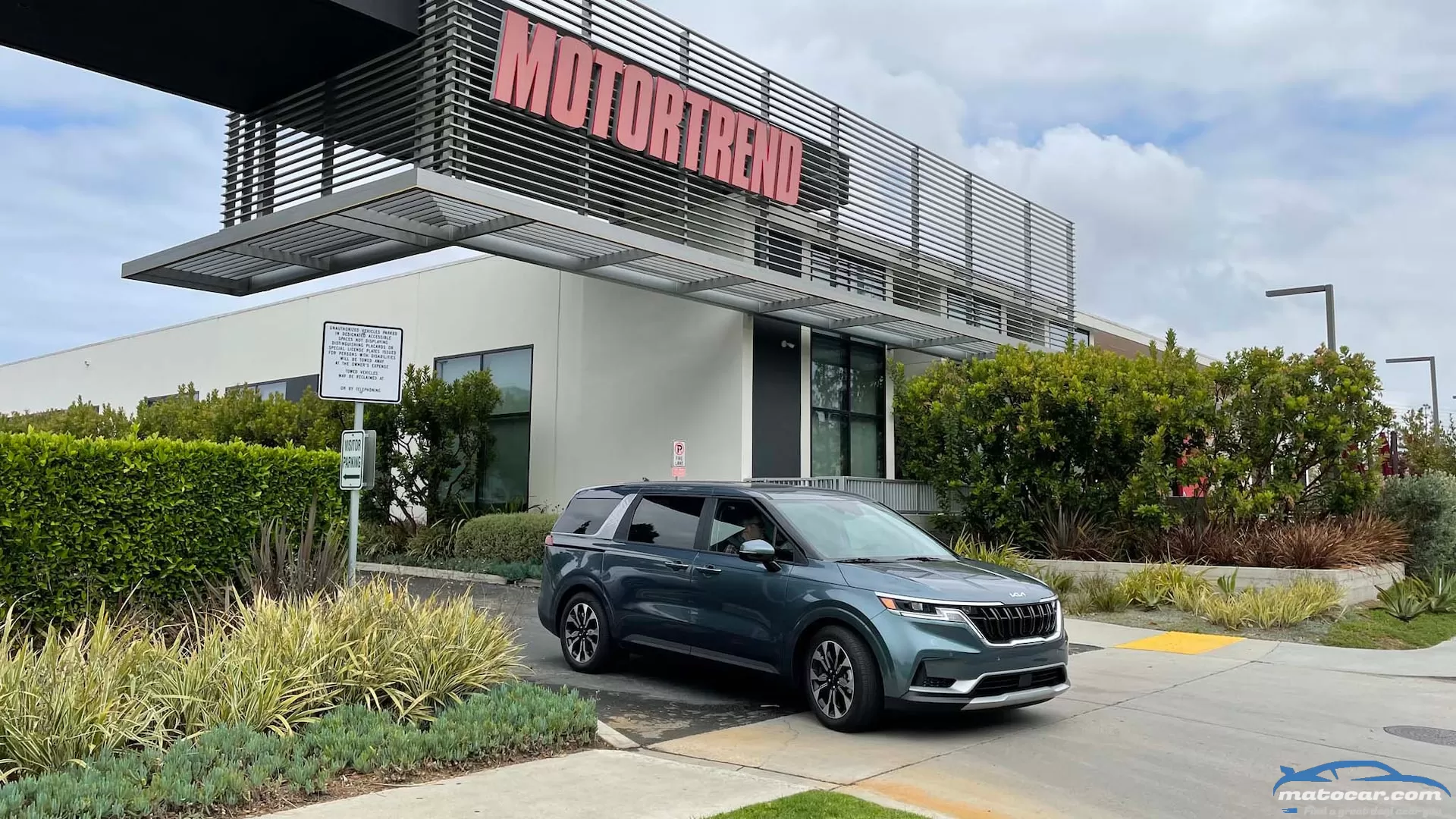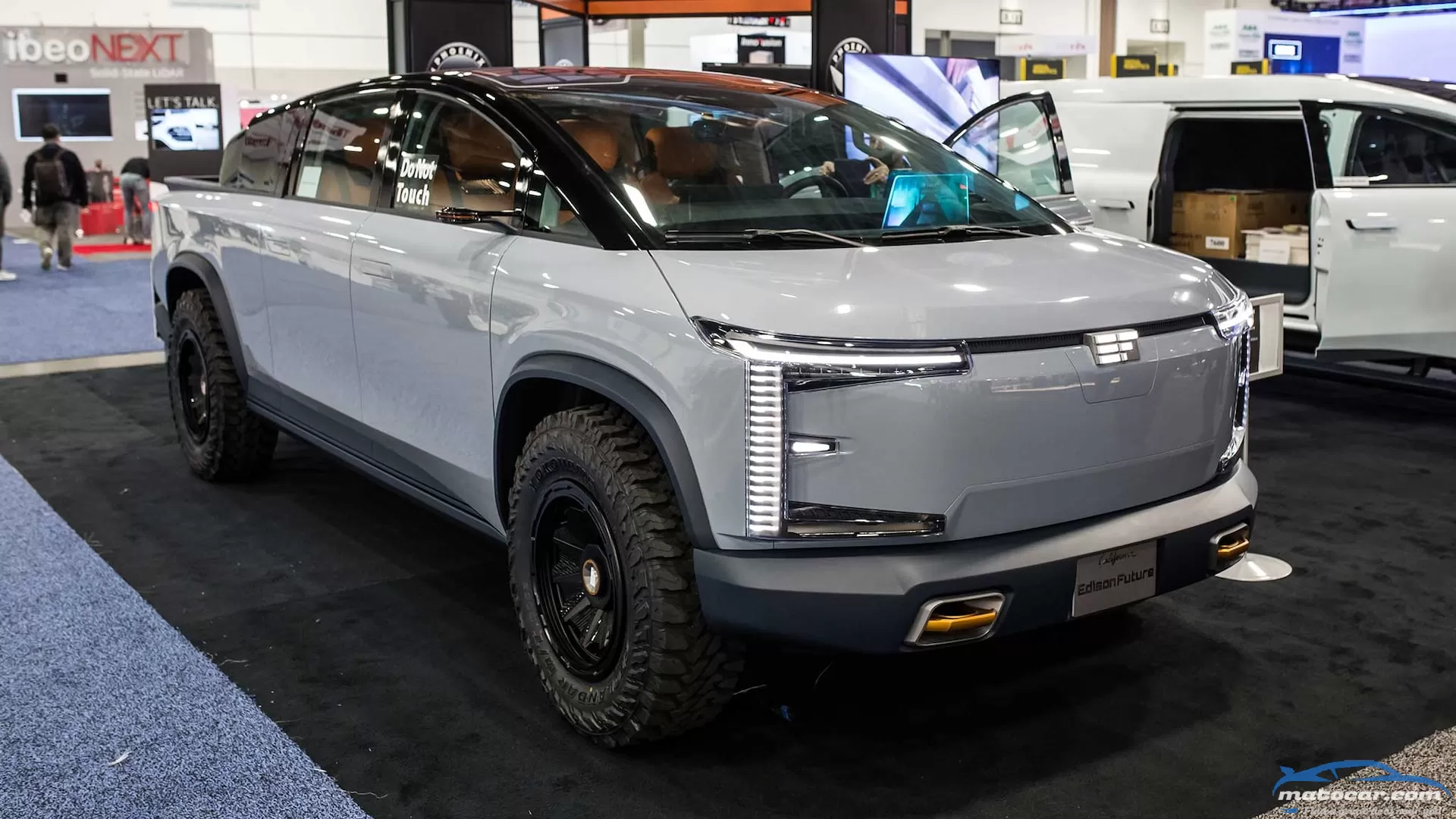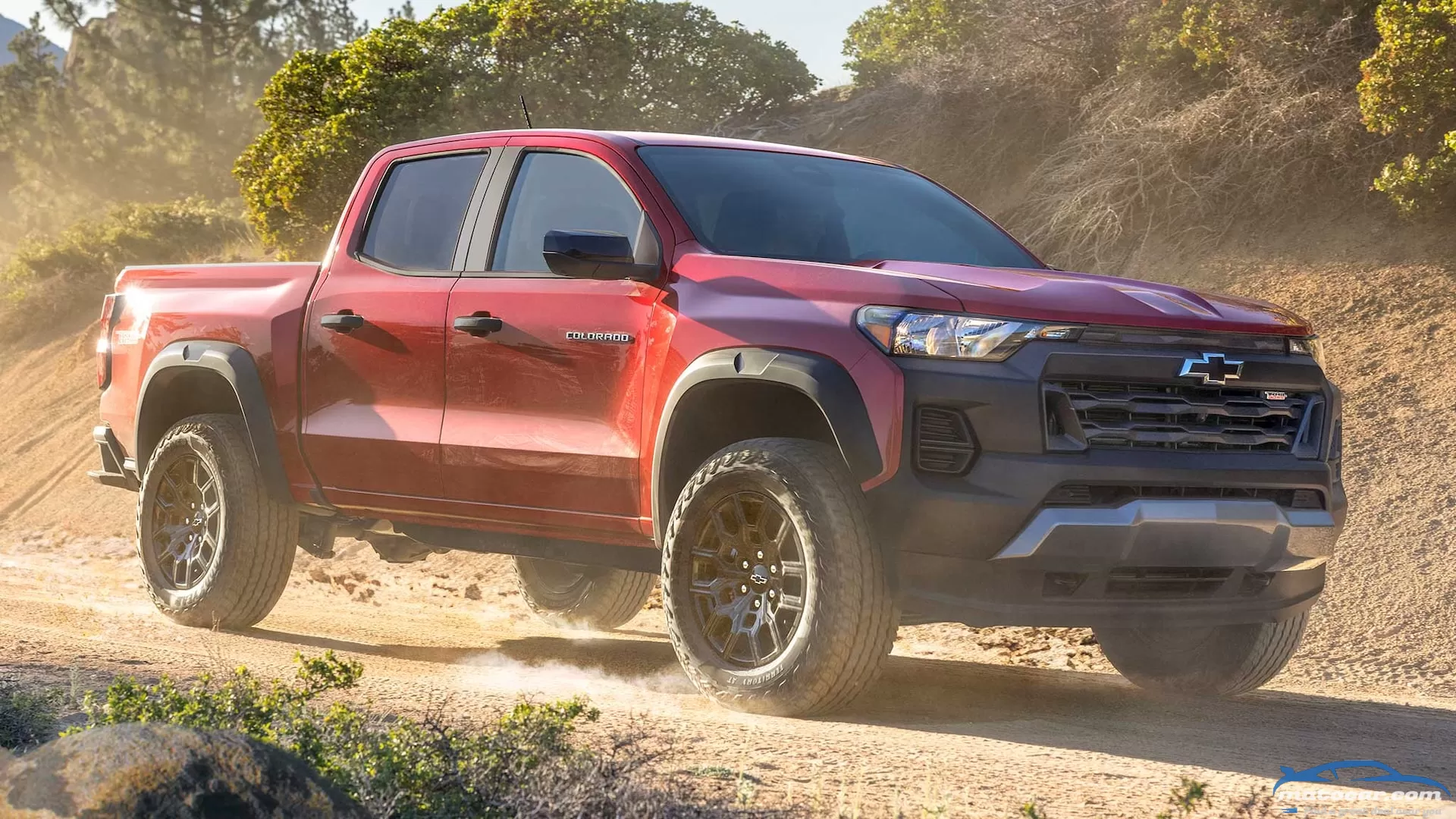Porsche Cayenne Platinum Edition Returns In Time for SUV's 20th Anniversary

It might be difficult to imagine today, but when the Porsche Cayenne first launched in 2002, the SUV received a mixed welcome. Most people sang the ultra-capable Cayenne's prowess on road and off it, while longtime Porschephiles felt it watered down the sports car brand's heritage. Now entering into its 20th year of production and its third generation, the Cayenne has long left its detractors behind, charging on with strong sales that have helped Porsche keep icons like the 911 bountiful. To celebrate, Porsche is gifting the Cayenne with an updated Platinum Edition trim, billed by the Stuttgart-based automaker as having "an even more stylish appearance and an attractive value."
What Makes It Platinum?
While there is no performance boost in the Platinum Edition, there are nice hints of luxury and subtle touches to differentiate it from your standard Cayenne. There are splashes of Satin Platinum colors on many trim and exterior pieces such as the intakes on the front fascia, the "Porsche" logo on the taillight, and badging, just to name a few. The 21-inch RS Spyder Design wheels also get the touch of Satin Platinum and are only found on the Platinum Edition model.
Black sport exhaust pipes and high-gloss black window trim really pop against some of the colors available on the Platinum Edition, including the standard white, while they blend in with the also-standard-cost black. However, for just a little extra, you can get some metallic colors in Jet Black, Carrara White, Mahogany, Moonlight Blue, or Chalk—a new special color for the Cayenne.
Stepping Into Luxury
Inside you get the standard upscale Cayenne interior with some Platinum Edition touches. The Chalk-colored seat belts are a great contrast to the black leather interior without being offensive or bland. There are touches of aluminum, as well, with a brushed aluminum sill panel with "Platinum Edition" embossed into it and textured aluminum trim, if you go for an optional interior package.
When you order your Platinum Edition Cayenne, you're getting some of the best equipment Porsche offers like LED headlights with Porsche Dynamic Light and a Panoramic Roof. Inside, you're treated to a Bose Surround Sound system while you're sitting in the eight-way adjustable front seats with Porsche crests in their headrests. The rear seats don't get the adjustability like the fronts, but they do get the crest in their headrests while everyone gets some ambient lighting treatment during the ride.
Any Way You Want It
However, you don't have to get it exactly in the way we just described. If you're willing to fork out the cash, you can get a mind boggling array of customization options on the exterior and interior of the Porsche Cayenne Platinum Edition models through Porsche Manufaktur. You can craft yours into the perfect Platinum Edition Cayenne that you want, just like you can with a regular Cayenne—or any number of Porsche models, really.
When Can You Get It?
Orders for the 2022 Porsche Cayenne Platinum Edition are open now and Porsche expects the first lot to arrive during the Summer of 2022. Every version of the Cayenne can get the Platinum Edition treatment save for the GTS, Turbo, Turbo S, and Turbo GT.
The Platinum Edition starts at $80,350 while the Coupe Platinum Edition starts at $84,650. S Platinum models start at $94,750 with another $2,200 allowing you to get into the S Coupe Platinum ($96,950). If you want a bit of electric power, the E-Hybrid Platinum starts at $94,050 while the Coupe version is an extra $1,100 ($95,150).
You may also like
kia carnival Full OverviewWe decided to assign our long-term 2022 Kia Carnival minivan to the Detroit office after it was delivered to our SoCal HQ. So, a cross-country road-trip/familiarization drive was hastily organized to relocate our Carnival from Los Angeles to its new home in Michigan. On a Saturday in May we flew out, picked up the yearlong test van, and decamped to a family outpost in Vista, California, where we spent the afternoon customizing settings, registering with Kia Connect (formerly UVO) telematics, and purchasing and stashing all our road-trip essential maps, snacks, and cooler. The Kia's nav system estimated the direct 2,316-mile route would take 33 hours, 17 minutes, but our route would be less direct and way more entertaining. Here's what we learned about the Carnival as a road-trip machine.Day 1: Calico Ghost TownOur first stop was at the Calico Ghost Town, a former silver and borate mining boomtown near Barstow, California. It was restored in the '50s by Knott's Berry Farm founder Walter Knott, who worked in Calico as a carpenter before becoming a berry/jam/pie magnate. It's here we noticed the Carnival EX gets standard sunshades for all the rear side windows—fancy stuff in a $39,055 van. This and the standard solar reflective glass (a step up from the LX's mere tinting) helped keep the cabin cool in desert sun.World's Tallest ThermometerI-15 from L.A. to Vegas passes a 134-foot-tall digital temperature gauge in Baker, built to commemorate a record 134-degree reading from 1913. As we passed this unofficial gateway to Death Valley and the giant 392-MW Ivanpah solar-generating mirror farm, we started to miss the SX trim's ventilated front seats just a little, but my copilot registered his relief at finding visors that slide to cover the entire front side glass width—a small thing, the lack of which excludes a vehicle from his purchase consideration.Neon Sign MuseumOur first gas stop was just across the Nevada line. We should have gassed up in Baker, but the Carnival is so shy about begging for fuel (there's a brief low-fuel warning on the info screen, then there's just the tiny orange low-fuel lamp) that we pressed on until the needle was fully on E. When we only squeezed 16-plus gallons into the 19-gallon tank, we reckoned the gauge is conservative. Passing Las Vegas, we avoided the hackneyed Welcome sign in favor of the less well known Googielicious Neon Sign Museum. Its lobby once welcomed guests to the LaConcha Motel, a fabulous sign for which is included in the collection.Arizona & UtahPressing on, we marveled at the gradual change of scenery from desert, to dry hills, to increasingly verdant mountains viewing a geology lesson in heaved sedimentary formations. We exited the interstate at Cedar City on State Route 14, which climbs to 9,900 feet crossing the scenic Markagunt Plateau, and stopped at Navajo Lake, which is fed by springs through lava tubes and feeds several rivers we'd soon be crossing, including the Virgin. By now we were disappointed in the Carnival's door pockets, which are basically only good for maps (remember those?). They feature a cupholder indentation, but it only fits 12-ounce cans (remember those?) Our taller water bottles and even motel coffee cups don't fit. A midcycle refresh needs to relocate the speakers to the upper door panel to accommodate larger water bottles.Red Canyon, Utah in JulyA little way up Utah's Scenic Byway 12 en route to Bryce Canyon is Red Canyon, which features miniature "hoodoos" that preview the epic eroded stalagmite-like formations that define Bryce Canyon. Jumping back in after this photo op, CarPlay acted up, requiring multiple unplug-plug operations (wireless CarPlay is not yet available) to resume, thus interrupting our streaming performance of The Book of Mormon musical. We eventually prevailed and proceeded to the Bryce Canyon Pines motel and restaurant for a feast of local trout and berry pie.Day 2: Bryce Canyon National ParkScotsman Ebenezer Bryce, for whom this striking park is named, was a Mormon convert and "serial pioneer" who settled a half-dozen towns or villages in the region to help spread the Mormon gospel. We spent 90 minutes in the park in 39-degree overcast weather searching unsuccessfully for a location where the van could pose with the spectacular canyon, then headed back down to rejoin the interstate following a stop at…Butch Cassidy BirthplaceThe notorious horse and cattle thief/bank and train robber grew up in this quaint log structure near Circleville, Utah. Just before arriving here, a speeding dove Kamikaze-dive-bombed the Carnival's nose, releasing feathers that penetrated the joint between the fascia and front fender. Descending the steeper hills in this area, we found the eight-speed automatic's manual shifting gate an intuitive and swift way to moderate downhill speeds without traumatizing the brakes.Giant Soda CansOur Roadtrippers app suggested several fun roadside "attractions" like these tanks adorning the parking lot of a Carl's Jr. They originally wore PepsiCo liveries (7Up, Dr. Pepper, Diet Pepsi, and Pepsi labels). A Carl's corporate conversion to Coke products presumably prompted the current labels. Here CarPlay went completely black-screen on us. Other native Kia screens worked, but CarPlay entered a deep and persistent snit that resisted even a "cold reboot" (park, ignition off, open and close door, lock, unlock, open and close, restart). Later, after a longer lunch stop, full CarPlay functionality mysteriously resumed.Serpentine Freeway CurvesAs part of the Carnival's Highway Driving Assist system, there's a feature that uses map and GPS data to slow down in tighter curves. Some curves on I-70 through Utah and Colorado prompted the system to decelerate way more than necessary—sometimes by 10 or 15 mph. Puke-prone preschoolers in car seats may warrant such caution, but with two adults looking out the windows, not at a screen, we overrode this feature and eventually disabled it.Snowy PassesAs we crested Vail Pass and other I-70 passes, we were met with lots of snow and dropping temperatures that dipped into the 30s. Yet, the Carnival's climate-control system managed to keep a constant temperature despite the day's wild swings in sun load and exterior temperature. As eastbound transcontinental travelers, we were saddened to see the Johnson Tunnel on I-70, which marks the beginning of the end of the journey's most epic scenery.Day 3: Pony Express & ObsolescenceThe welcome center at Julesburg, Colorado, honors the Pony Express National Historic Trail—a 1,900-mile run from St. Joseph, Missouri to San Francisco that originally took 10 days. It was rendered largely obsolete just 18 months after it was established by the advent of the telegraph. Speaking of obsolete, how is it that this brand-new minivan lacks modern conveniences like a capless fuel filler, wireless CarPlay, and USB-C jacks? This might be a long year.Rain Stays Mainly in the PlainsHard rains driven by strong headwinds torpedo our fuel economy all day, from an indicated 25 or 26 mpg through the mountains, down to 20. We skipped a visit to the Archway Museum, which pays tribute to pioneer adventurers who plied the Great Platte River Road. Crossing the plains, whoever is in the passenger seat turns to email and work, whereupon we miss the SX's 115-volt plug and our van's built-in Wi-Fi (we initiated setup back in California, but the system takes 10 days to activate). Our portable inverter and MiFi kept us connected and productive.Pioneer VillageJust east of Kearney, Nebraska, we detoured 13 miles south to Minden to see the Harold Warp Pioneer Village, a cluster of 28 buildings housing 50,000 historical artifacts including loads of cars, planes, tractors, trains, etc. We spent an afternoon and evening here during a cross-country trek in 2001 and were saddened to see the decline it's suffered in the years since. Leaving, we approached the locked Carnival with the key sharing a pocket with an iPhone in the driving rain and struggled to get in. Turns out the phone interferes with the key—a fact we'd struggle to remember in the coming days. Other cars occasionally suffer this problem; here it's always.Drizzly Des MoinesWe streamed the musical Hamilton on our way into Des Moines (later learning the Broadway touring company is in town!) and decided the non-branded audio system sounds decent but lacks any sense of spatial imaging. We found ourselves fiddling with tone settings more than we might with the SX Prestige model's 12-speaker Bose setup to mitigate this. We closed out the night with whiskeys at The Library, where nearly two decades earlier, MotorTrend digital director Erik Johnson and I met and drank with the Drake University women's basketball team during a peculiar Subaru press trip.Day 4: Detroit or BustRoad-tripping offers very few compelling roadside attractions to tempt us on the anchor leg of this journey, but the birthplace of Michael Jackson, the King of Pop, at 2300 Jackson Street in Gary, Indiana, lures us off the freeway (and lest you presume the road has been renamed, this neighborhood's north-south streets are all named for presidents). We both found ourselves fidgeting, readjusting the seat, and moving our legs around to stay comfortable after a few hours at the Carnival's helm. A little reverse engineering and/or patent-licensing of Nissan Zero Gravity seats might be another midcycle upgrade worth doing.Home at LastAfter four 8-9-hour driving days, we rolled into 's Detroit outpost having covered 2,470 miles and consumed 102.726 gallons of gas at a cost of $483.85. That works out to an average of 23.7 mpg—that's about 7 percent above the EPA combined rating of 22 mpg and a reasonable 7 percent below the trip computer's calculated 25.3-mpg average for the trip. Stay tuned; this rig is bound for many more adventures.Looks good! More details?2022 Kia Carnival (EX) Specifications BASE PRICE $39,055 PRICE AS TESTED $39,940 VEHICLE LAYOUT Front-engine, FWD, 8-pass, 4-door van ENGINE 3.5L direct-injected DOHC 24-valve 60-degree V-6 POWER (SAE NET) 290 hp @ 6,400 rpm TORQUE (SAE NET) 262 lb-ft @ 5,000 rpm TRANSMISSION 8-speed automatic CURB WEIGHT (F/R DIST) 4,609 lb (56/44%) WHEELBASE 121.7 in LENGTH x WIDTH x HEIGHT 203.0 x 78.5 x 68.5 in 0-60 MPH 7.7 sec QUARTER MILE 15.8 sec @ 90.4 mph BRAKING, 60-0 MPH 129 ft LATERAL ACCELERATION 0.78 g (avg) MT FIGURE EIGHT 28.4 sec @ 0.58 g (avg) EPA CITY/HWY/COMB FUEL ECON 19/26/22 mpg EPA RANGE, COMB 418 miles ON SALE Now TOTAL MILEAGE 3,621 mi AVERAGE FUEL ECON 22.8 mpg UNRESOLVED PROBLEM AREAS Intermittent CarPlay failure Show All
The 2023 Chevrolet Colorado is a brand-new midsize pickup truck. If you're thinking, "well, that's obvious," you're right. But we do point it out because, when Chevy resurrected the previously compact Colorado as a midsize truck for 2015, it introduced a not-quite-as-new rig, a modified version of a truck it had been selling for years in global markets such as Thailand and Brazil.Alas, with a Silverado-derived frame, American-market-specific powertrains and cabin appointments, the Colorado was hardly some cobbled-together beast. The outgoing pickup is one of the best midsize pickups out there—to be accurate, it is the best, despite its age. Snatching an existing truck from Thailand proved to be such a savvy move that Ford basically did the same thing when it brought back the once-compact Ranger from the dead as a larger midsize truck—and Colorado competitor—for 2019. Given how the old Colorado was in some ways already several years old when it landed stateside eight years ago, the 2023 Colorado's ground-up newness, therefore, is one of its biggest standout features.New Is as New DoesJust looking at the new Colorado, the styling clearly benefited from this redesign. Where the old Colorado was soft-edged and fairly generic-looking, in keeping with the more budget-conscious global model, the new truck adopts a bold, assertive new look that positively screams "America, truck yeah!"Chevy moved the front axle forward, lengthening the wheelbase 3.1 inches in the process and shortening the front overhang. The net effect is a longer, more horizontal hood and improved approach angles for the nose, a boon off-road. The designers capitalized on this blocky new shape with a Silverado-like mug with slim headlights and bold inserts that give the impression of a full-width, full-height grille yawning from the bumper to the hood. (Also like on the Silverado, that mug is slightly different on nearly every trim level.) Along the body sides, there is a deeper channel cut into the door skins, which help visually puff out the squared-off fender bulges front and rear.Another big change? The previous-generation Colorado's entry-level extended-cab body style was pitched in the dustbin. You can now only purchase the Colorado as a four-door crew cab with a short bed (5-foot, 2-inch bed). Chevy says this move simplifies things on its manufacturing end, but primarily gets in line with the configuration that attracted the most buyer interest on the last Colorado. One Little Engine that CanAlso simplifying the lineup is the 2023 Colorado's move to a single engine choice. A 2.7-liter turbo I-4 engine replaces the old Colorado's entry-level 2.5-liter I-4 (which was limited to base Work Truck models anyway), 3.6-liter V-6, and 2.8-liter turbodiesel I-4 options. This engine isn't entirely new; it was introduced a few years ago on the larger Silverado 1500, and strategy-wise, it is comparable to the Ford Ranger's single, lineup-wide 2.3-liter turbo I-4 engine.Unlike the Ranger's four-cylinder, the Colorado's is available in three states of tune, offering up at least some choice. Entry-level Colorado Work Truck and LT models make 237 hp and 259 lb-ft of torque. Optional on those Colorados and standard on the Z71 and Trail Boss models is a 310-hp, 390-lb-ft version. And limited to the range-topping Colorado ZR2 (which we've covered in depth here), the ultimate off-road iteration of the new truck, is a 310-hp, 430-lb-ft 2.7-liter I-4. Chevy says that, for the most part, the power differences are achieved via tuning of the computers, though the lowest-output version has some minor hardware differences. Every Colorado mates its 2.7-liter I-4 to an updated eight-speed automatic transmission.Fuel economy estimates for the new engine are forthcoming, but the power story—both compared to the old Colorado and its primary competitors—is interesting. With 310 hp in top guise, the Colorado is the most powerful midsize pickup you can buy. Granted, the old V-6 held the same title (in both the Colorado and its GMC-badged twin, the Canyon), with 308 hp; the now-discontinued diesel engine produced a mighty 369 lb-ft of torque, but that figure's easily eclipsed by the midrange 2.7-liter I-4. Even the new base models generate nearly as much torque than the old V-6, albeit at a higher rpm (5,600 vs. 4,000). The higher-output 2.7s deliver their peak torque at just 3,000 rpm.The 2.7-liter turbo is a truck engine through and through, having been designed from the outset for duty in the full-size Silverado (and playing an unusual secondary role in the Cadillac CT4-V). In the smaller, lighter Colorado, it should prove quite burly. It also includes standard cylinder deactivation, which can shut down two cylinders under light loads. Yep, that means this'll be the only (temporarily) two-cylinder midsize pickup you can buy.Five Grades, Mostly Off-RoadEven though the Colorado comes in Work Truck, LT, Z71, new-to-Colorado Trail Boss, and hardcore ZR2 guises, all five models share key standard features, including a new (sharp-looking) 11.3-inch touchscreen with wireless Apple CarPlay and Android Auto, an 8.0-inch fully digital gauge cluster, eight bed tie downs, and a segment-exclusive electronic parking brake. Chevy says the base Work Truck and mid-grade off-road Trailboss models share a more "rugged aesthetic that is ready for work and play" inside, which we take to mean more basic, abuse-resistant, and plastickier cabin materials. The LT swaps in silver trim, plusher accents, and a leather-wrapped steering wheel, while the Z71 gets a "sportier ambiance" with black and red accents and a mix of cloth and vinyl on the seats.Again, like the newly bold exterior, the Colorado's interior goes from uninspired to competitive, with a brash, full-width dashboard panel and its round outboard air vents giving us plenty of Camaro feels. The new touchscreen perches in the middle, tombstone-style, but close to the steering wheel for what looks like a comfortable reach. There are more upmarket details throughout, though most examples—the stitching on the dashboard and padded panels around the center console—are limited to the higher trim levels. And like the Camaro, the central air vents are buried low on the dash; that pays off for the ergonomics of the climate controls, which nestle up under the touchscreen, but is probably not great for airflow above chest height for front-seat occupants. A drive mode selector lives on the left of the console on models so equipped (mostly the off-road models), pushing the shifter to the right.Other differences between the models are clearer from the outside. The Work Truck gets an all-black-plastic face like the larger Silverado WT, 17-inch steel wheels, and that's pretty much it. LT models distinguish themselves with more streetable 17-inch wheels and tires, more body color elements on the front end, and more chrome. Finally, there are the trio of off-road versions, ranging from the relatively tame Z71 to the Trail Boss (which gets a 2.0-inch suspension lift and burlier tires) to the ZR2 (which sits 3.0 inches higher than WT/LT/Z71 models and has a wider track). The grille and bumper treatments get wilder the closer to the ZR2 you get, with the ZR2 out-crazying the rest of the lineup with flared fenders, meaty bumpers, and even an available bed-mounted roll bar with lights and beadlock-capable wheels via a special-edition Desert Boss package.Off-road equipment varies from optional four-wheel-drive on the WT and LT to a standard limited-slip rear differential (standard on Z71 and Trail Boss) to power-locking front and rear diffs on the ZR2, which also once again rides on Multimatic DSSV spool-valve, frequency selective dampers. Those fancy shocks passively take the edge off the worst terrain with valving that slows faster inputs and handles slower amplitudes more softly. The net result is better wheel control over washboard surfaces and more controlled bump stop events. Ground clearance tops out at an outstanding 10.7 inches for the ZR2, with the Trail Boss standing 9.5 inches off the deck and the other Colorados perched at 7.9 to 8.9 inches.If you're thinking Chevy's inclusion of three off-road models and switch to more aggro styling and the single crew-cab bodystyle signals an intent to chase after adventurous types with the new Colorado, you're right. The automaker also hopes the new truck bed's available 110-volt household outlet, motorcycle-tire indents in the forward bed wall, and newly available in-tailgate storage will appeal to weekend warrior types. That tailgate storage, in particular, carries whiffs of the Honda Ridgeline's in-bed "trunk," an underfloor, watertight cubby with a drain that doubles as a cooler. The Colorado's lockable, weathertight hollow tailgate is less useful, probably, but at 45 inches wide and 4 inches deep can still probably be stuffed with ice and some cold snacks.If Chevy can keep the current truck's decent road manners and roomy interior in place while improving things with the new 2.7-liter engine and expanded off-road offerings, consider the 2023 Colorado a ringing success. But it'll have stiff competition: Ford is on the cusp of launching its also-all-new 2023 Ranger, and Toyota's sales-leader Tacoma is about to be redesigned, as well. We'll see how the new Colorado shakes out when it goes on sale midway through 2023.2023 Chevrolet Colorado Specifications BASE PRICE $28,000-$50,000 (est) LAYOUT Front-engine, RWD or 4WD, 5-pass, 4-door truck ENGINE 2.7L/237-310-hp /259-430-lb-ft turbo DOHC 16-valve I-4 TRANSMISSION 8-speed auto CURB WEIGHT 4,750-5,300 lb (mfr) WHEELBASE 131.4 in L x W x H 213.0-213.2 x 84.4 x 78.8-81.9 in 0-60 MPH 7.0-7.5 sec (MT est) EPA CITY/HWY/COMB FUEL ECON TBD EPA RANGE, COMB TBD miles ON SALE Spring 2023 Show All




0 Comments